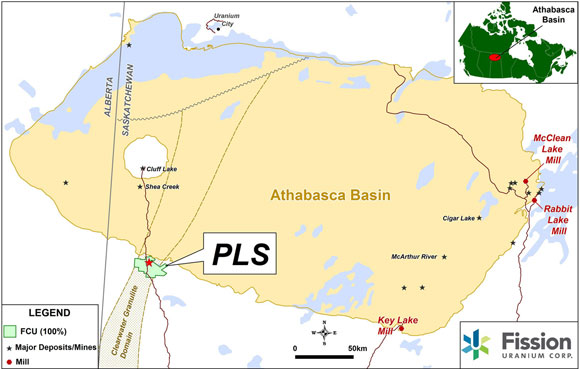
Paying taxes is about a pleasurable as a root canal. It's hard not to think about all that money going bye bye.
But it's inevitable and there's nothing we can really do about it, I guess.
However, tax day does bring to mind something quite a bit more positive: Like how to make money in the energy sector.
Actually, that's not as much of a stretch as you might think. That's because the bridges are already in place between how taxes are paid and energy returns.
Right about now, some of you are probably thinking I will start talking about energy sources like renewables that survive on government tax concessions.
Nope.
Or perhaps you might think this is going to be a discussion of tax write offs for certain field projects that utilize public land.
Wrong again.
And unless you are prone to the more fanciful, your thoughts should not be wandering toward squirreling money away on a small island somewhere.
Because there has been a much more practical approach that's been generating success for a while now.
This is how you play by the rules and still beat the taxman in Washington.
Become a Master of Energy Holdings
We have talked about master limited partnerships (MLPs) before. My investment advisory services continue to profit from them. And these days they are coming back into focus.
MLPs allow owners to move tax liability directly to their personal returns, bypassing the need to pay corporate taxes. In so doing they are similar to "S" corps, the favorite device for small businesses. There as well the profits or losses from the company move to the individual owner's taxes and no company-level tax obligation ensues.
This limited partnership model has been quite popular in midstream applications, particularly those established for ownership of pipelines and especially for natural gas. However, MLP "clones" have expanded into other midstream services (gathering, initial processing, terminals, and storage, among others). More recently, they have moved into broader uses, including upstream production operations and downstream distribution.
Now the MLP tax advantage was initially a benefit only to actual owners of the limited partnership itself. However, MLP owners began releasing a portion of the partnership holdings as an equity issuance.
That is when MLPs became something of interest to average individual investors.
Whatever percentage of the MLP assets became represented by tradable stock shares had to represent that part of the partnership profits. In addition to becoming shares rising in value, therefore, they also received MLP profits as dividends. Those dividends would regularly be better than average yields for the market as a whole.
Of course, dependent as they are on the price of natural gas or oil, when that price declined so also did the value of the MLP stock issues. As a result, MLPs performed far weaker as the glut of unconventional shale gas hit the market and that new volume collided with a historically warm winter last year to drive down the gas price to $2 per 1,000 cubic feet (the NYMEX futures contract yardstick).
These days, the gas price is rising with the prospects for many MLPs right along with it. Those partnerships that emphasize midstream services in crude oil have already been benefitting from the quicker rise in oil prices, even in the face of a pullback over the past week.
The improvement has also foreshadowed an even more recent development. Partnerships employing the MLP model have shot up to combine midstream assets with those closer to the fields or the actual end consumers. In the process, a new direction has emerged.
When it comes to the upstream applications, traditional oil and gas trusts are beginning to give way to more streamlined production ownership schemes. Trusts are vehicles to hold a percentage of production volume from designated wells over a given period of time. Many also issue equity shares. These once again have been the sole way average investors could participate.
But the prospects for carrying such trust shares have the same problems as MLPs in those environments of declining market price for oil or gas. In addition, the trusts have another drawback. Established for a given period of time, the trust equities also reflect a progressively reducing profit generator.
There's Nothing Like Flexibility
Here, the new wrinkle comprises yet another partnership clone and an improvement in access by small investors. Focused trusts and similar entities are structuring approaches that allow positions for a fraction of the price they used to command. In the process, limited partnerships are opening for the little guy.
It is unlikely that such partnerships would spin off share issuances. They usually involve projects too small, a limited rather than expanding number of wells, and consider production that has a lower time horizon than earlier trusts.
But they nonetheless open up the world of partnerships to investors until now limited to stocks and bonds.
These new plays require due diligence on several levels: the field prospects themselves; experience of the major participants in the operation; success in contiguous drilling; and on previous related projects, the adequacy of the development and production budgets, among others.
Nevertheless, these new holdings provide an exciting flexibility for individual portfolios. Obviously, there are risks (as with any investment). Yet this approach provides a good diversification balance option, especially when the volatility inevitably hits.
I have been following these new partnership holdings for some time, appraising the strengths and weaknesses of both projects and management, estimating production volumes, and reviewing the partnership particulars of the more promising holdings. They are increasing in number, which requires more careful examination to distinguish the genuine opportunities from the rip-offs.
When the trends become clearer, I'll provide some greater detail on how to profit in this latest change in the oil and gas ownership game.
Kent Moors
Oil & Energy Investor



























































